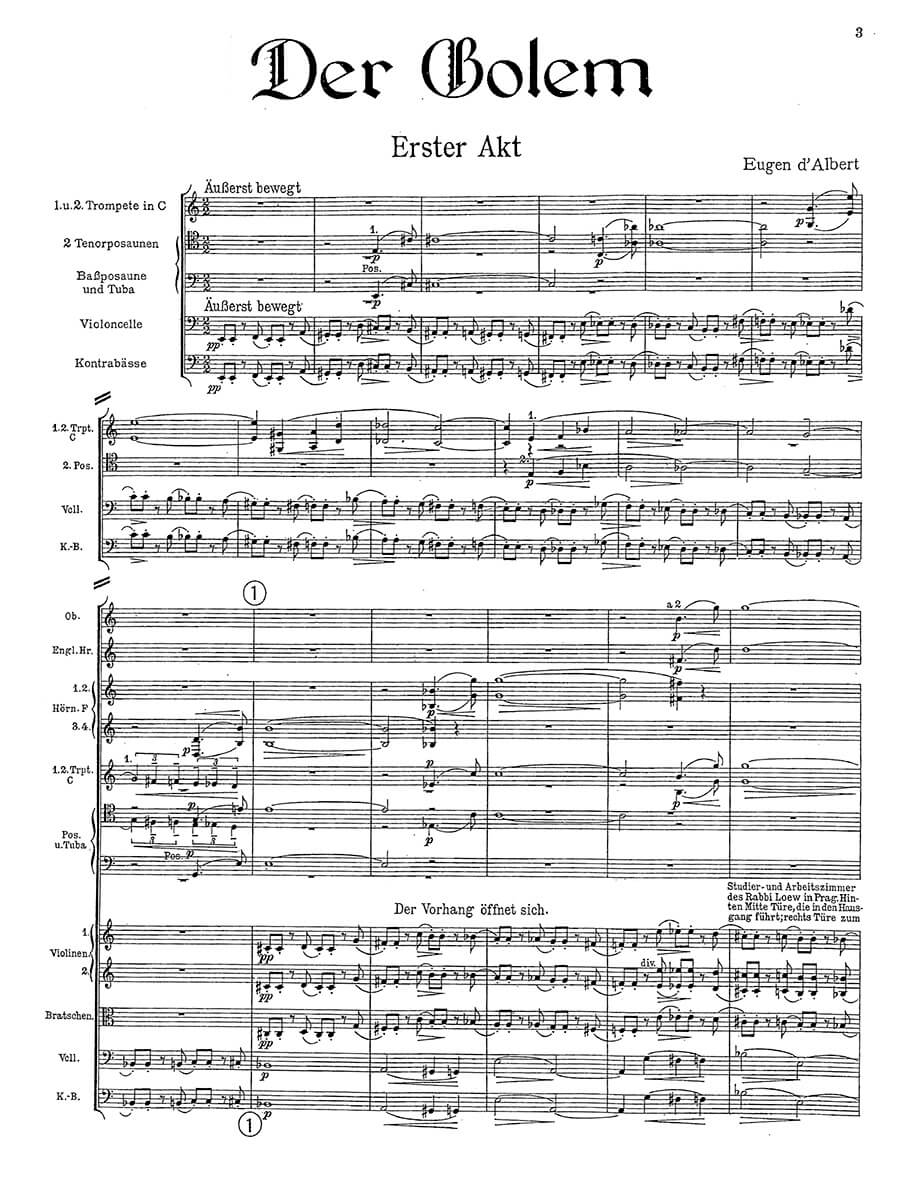Der Golem (full opera score with German libretto)
Albert, Eugen d’
70,00 €
Preface
Albert, Eugen d’ – Der Golem (full opera score with German libretto)
(b. Glasgow, 10 April 1864 – d. Riga, 3 March 1932)
Eugen d’Albert (b. Glasgow, 10 April 1864 – d. Riga, 3 March 1932)Der Golem BackgroundEugen d’Albert (1864-1932) was a Scottish-born German composer and pianist. A piano prodigy who studied with Franz Liszt, d’Albert was primarily known as a skilled interpreter of a wide variety of German compositions, including his own transcriptions and editions of J.S. Bach’s compositions. Richard Wagner’s operas influenced his compositional style, and inspired d’Albert to compose 21 of his own operas. Although many considered d’Albert’s true talent to be that of a pianist rather than composer, his operas were popular and well-attended. Music historians have categorized d’Albert as an important opera composer of the Weimar Republic. Although he dabbled with a variety of musical styles, he has been deemed an important representative of the fleeting pre-war “German Verismo.”
D’Albert’s use of rich stylistic elements suit the dramatic, tragic story of the golem, a legendary clay monster brought to life by a magical rabbi to protect the Jews of Prague in the 15th century. A “Musikdrama in Drei Akten,” Der Golem uses a libretto by Ferdinand Lion based on Arthur Holitscher’s 1908 play Der Golem: Ghettolengende in drei Aufzügen. The opera premiered on 14 November 1926 at the Alte Oper in Frankfurt and was directed by conductor Clemens Krauss. It is notable that three horror films based on the same topic produced by Paul Wegener were also popular in the decade preceding d’Albert’s opera: Der Golem (1915), Der Golem und die Tänzerin (1917), and Der Golem, wie er in die Welt kam (1920). Wegener’s final film in the trilogy is considered a prime example of early German Expressionism and could have had a strong influence over d’Albert’s treatment of the same story. In fact, music critics referenced Wegener’s 1920 film when discussing the premier of d’Albert’s opera.1 Although d’Albert’s musical style remained tonal, his chromatic and complex harmonic language suited the sort of distorted reality preferred by Expressionists of the day. Indeed, d’Albert’s chilling score provides a sinister atmosphere that allows the story to evolve in the same fashion as would an early German Expressionistic horror film. The opera remained popular up until the start World War II then fell into complete obscurity….
Read full preface > HERE
Score Data
| Edition | Opera Explorer |
|---|---|
| Genre | Opera |
| Size | 210 x 297 mm |
| Printing | Reprint |
| Pages | 428 |
